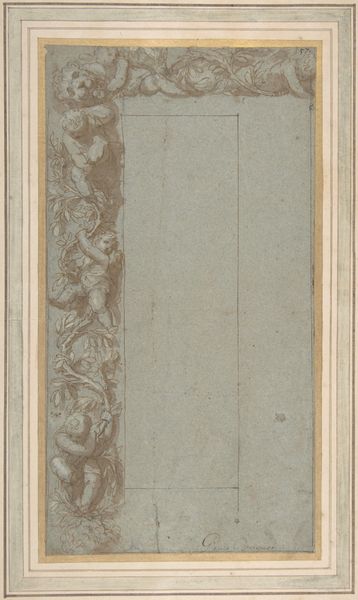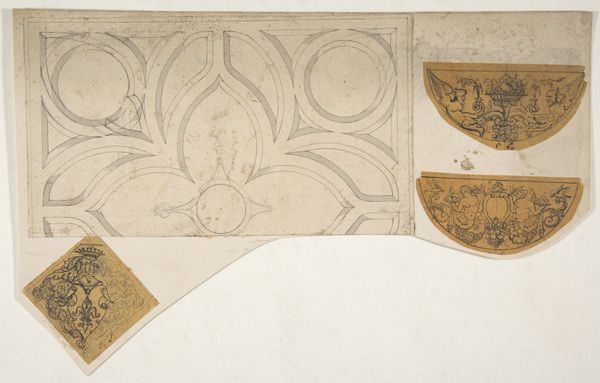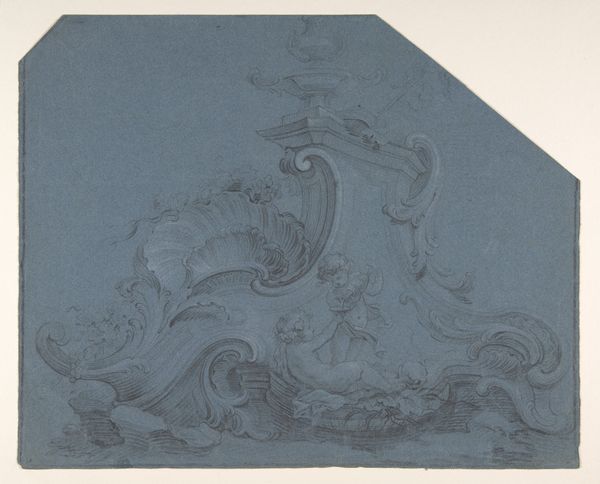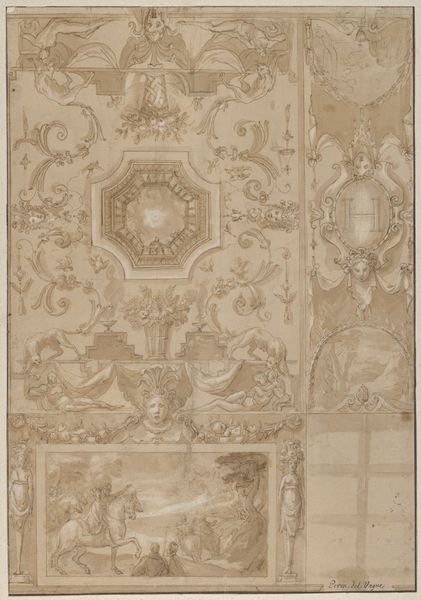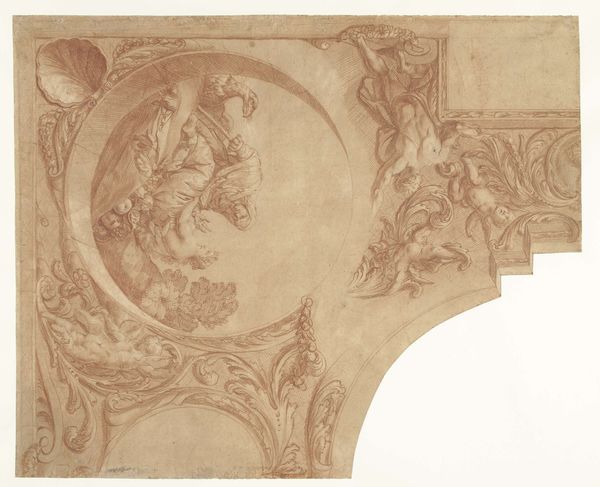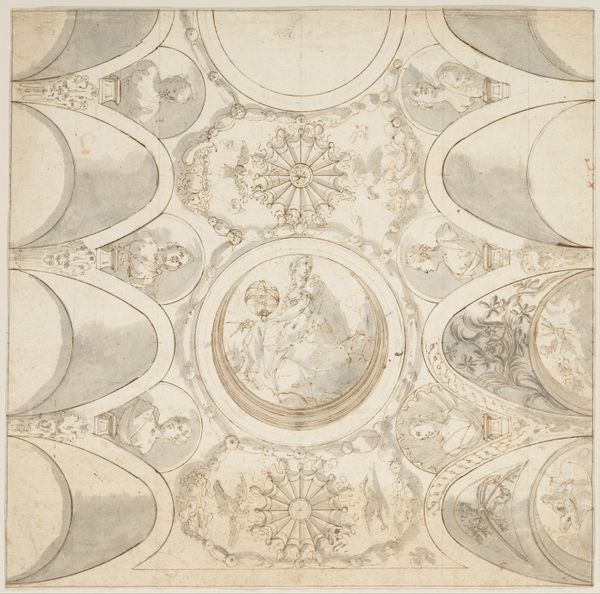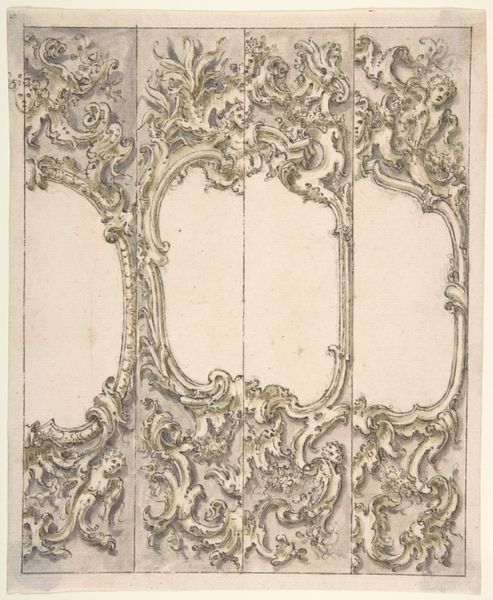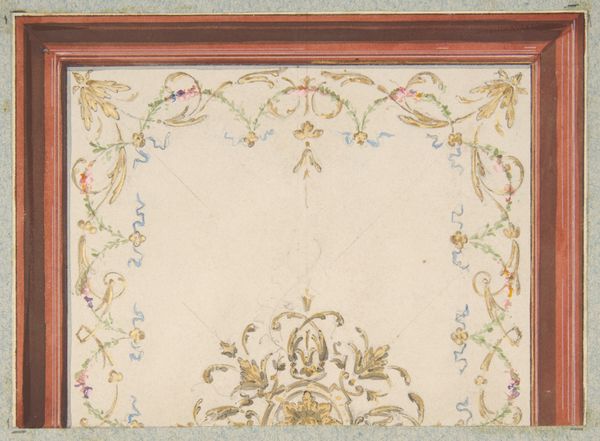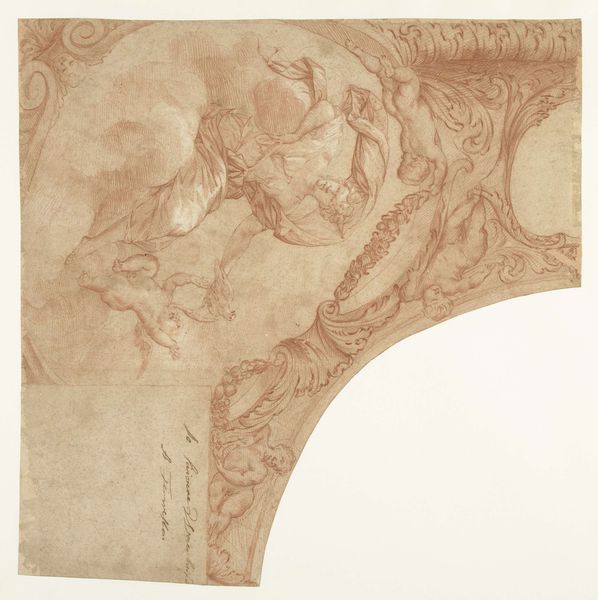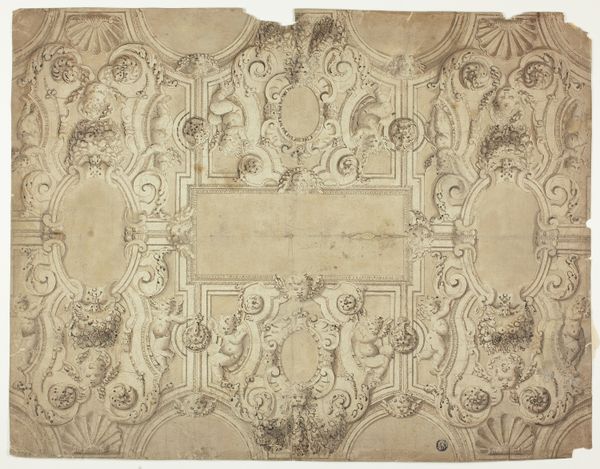
Design for the Decoration of a Lunette with a Large Central Cartouche 1498 - 1561
0:00
0:00
drawing, print
#
drawing
#
allegory
# print
#
figuration
#
11_renaissance
#
history-painting
#
italian-renaissance
Dimensions: 12-1/2 x 21-1/2 in. (31.8 x 54.6 cm)
Copyright: Public Domain
Curator: What a fascinating example of Italian Renaissance design! This is Battista Franco's "Design for the Decoration of a Lunette with a Large Central Cartouche," dating from about 1498 to 1561. Editor: It's captivating, in a ghostly way. The composition immediately strikes me as quite elaborate. It has an air of faded grandeur. What medium did Franco employ to bring forth the fine work we have before us? Curator: Franco created this design on paper using pen and brown ink with a brown wash, which allowed him to render these subtle variations of tone. Note the allegorical figures nestled among the swirling ornamentation. It offers insights into the workshops of Renaissance Italy and their output. Editor: The swirling patterns contribute significantly to its visual interest. Semiotically speaking, I wonder about that central cartouche; its emptiness seems charged with potential, waiting to be filled with meaning. Is it simply functional—a placeholder, so to speak? Curator: Exactly. Consider its place within a larger system. It offers an exercise in speculation. Was the intended space to contain a family crest, perhaps, or maybe it would commemorate some historical or allegorical moment, we can never know now? Editor: Speaking of process, I find myself wondering about the labor involved in this particular piece and the production that would have gone into the mural this design inspired, if it ever came to that point. How many hands were involved, and how did they interact? Curator: I see your focus on the wider labor situation of Renaissance workshop practices. This connects neatly to the economics and the structures that fostered artistic creation, highlighting how artistic outputs like Franco’s emerge from a complex system. Editor: The interplay between form and function, isn't it? Thinking about social and material dynamics—how consumption influenced artistic decisions—offers some valuable insight here, not just of his drawing capabilities but his position within the creative marketplace. Curator: Looking back, it is inspiring to see an Italian Renaissance artwork designed not as an end product, but a prototype for the mural arts! Editor: And how insightful to approach Franco’s historical context from the perspective of craft production that can tell us a bit more of the system in that day.
Comments
No comments
Be the first to comment and join the conversation on the ultimate creative platform.

